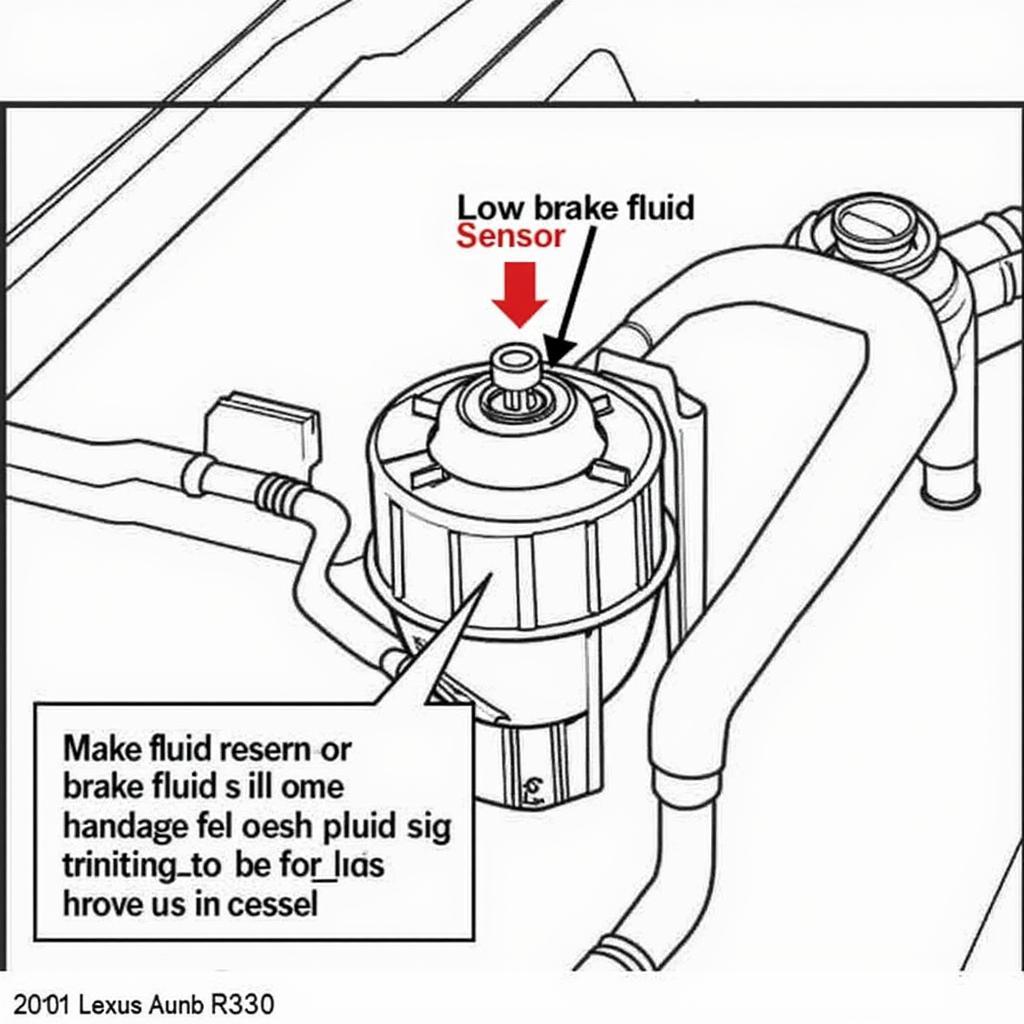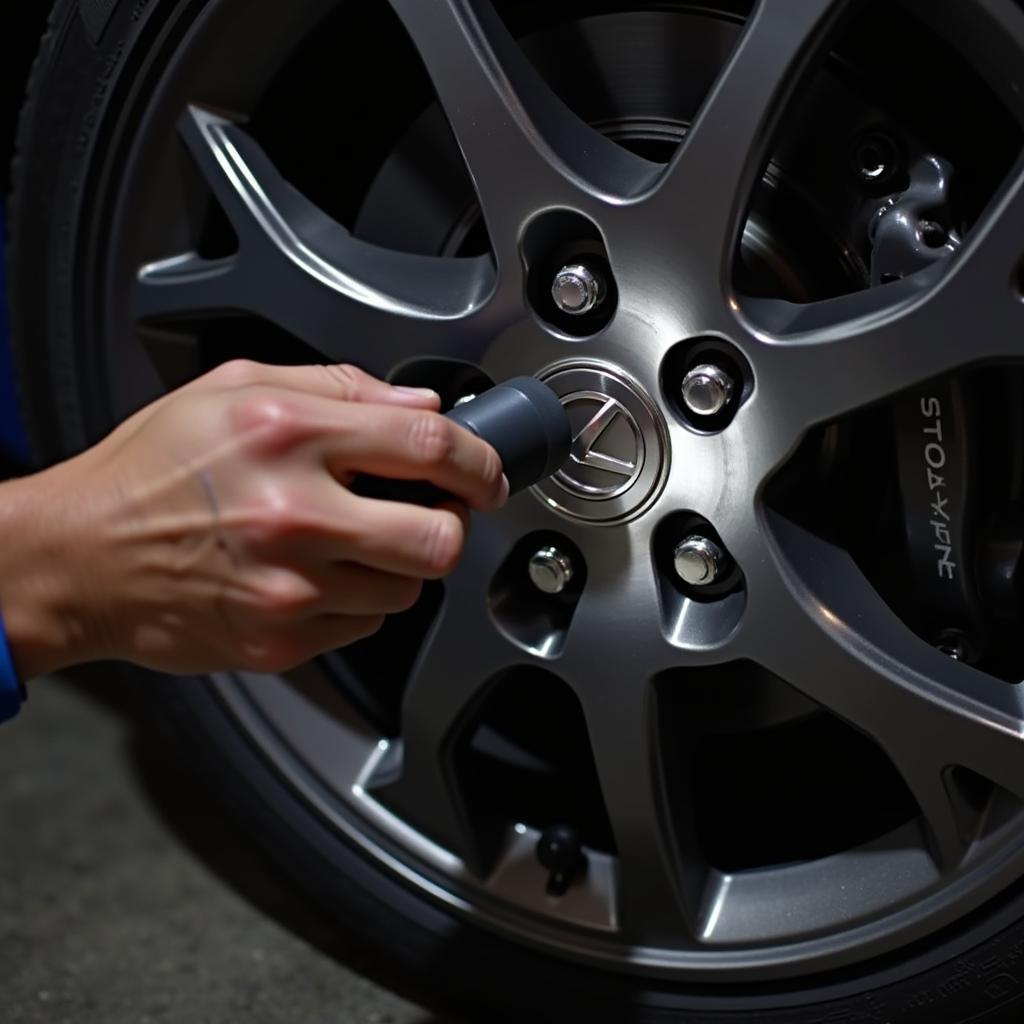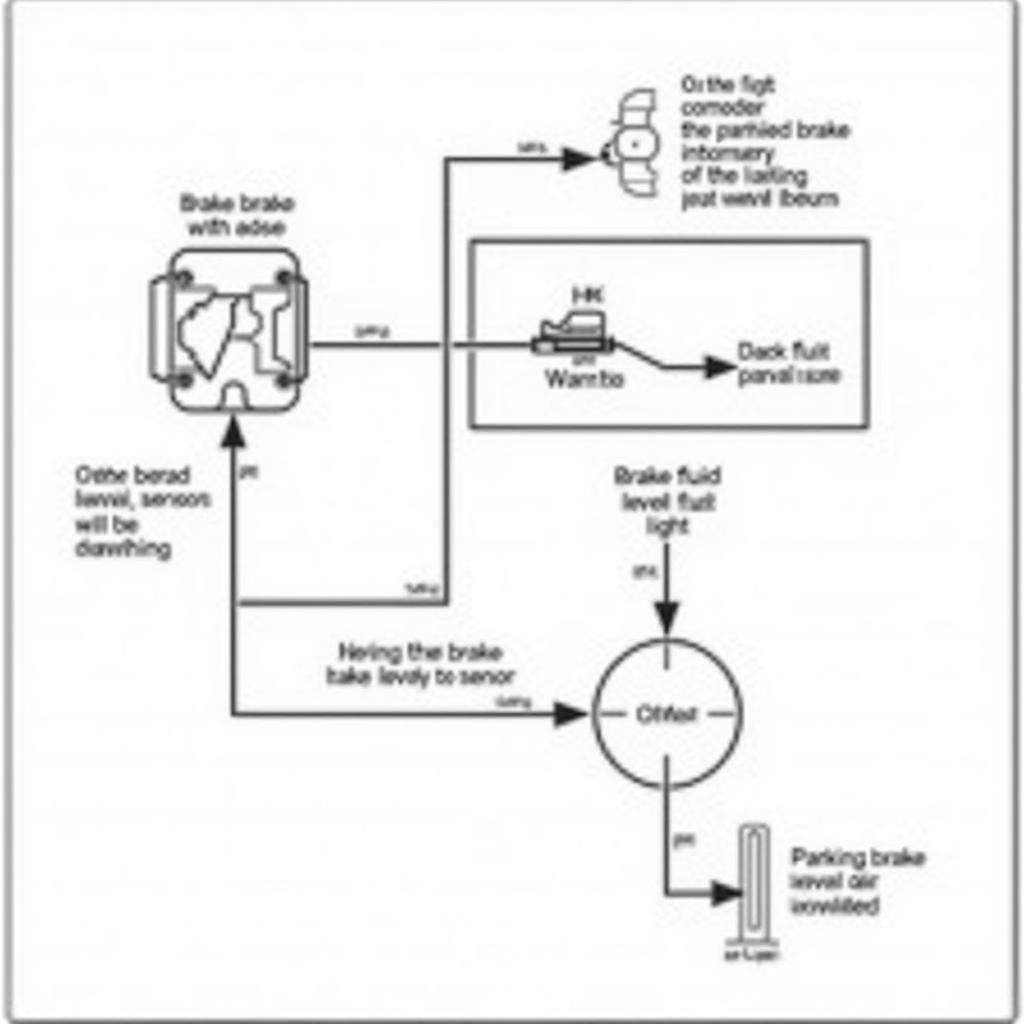The dreaded illumination of your 2010 Lexus RX350 brake warning lights can be a cause for concern. Understanding why these lights activate, how to diagnose the problem, and what steps to take can save you time, money, and potential headaches. This comprehensive guide will walk you through the potential causes, diagnostic procedures, and solutions for brake warning light issues in your 2010 Lexus RX350.
Understanding Your Lexus RX350 Brake Warning System
Your Lexus RX350 uses a sophisticated system of sensors and indicators to alert you to potential brake system issues. These warning lights can indicate anything from a simple parking brake engagement to more serious problems like low brake fluid or a malfunctioning ABS system. Ignoring these warnings can lead to compromised braking performance and potential safety hazards.
Common Causes of Brake Warning Lights
Several factors can trigger the brake warning lights in your 2010 Lexus RX350. Here are some of the most frequent culprits:
- Low Brake Fluid: This is the most common reason for the brake warning light to illuminate. Low brake fluid can indicate a leak in the brake lines or worn brake pads.
- Parking Brake Engaged: Sometimes, the simplest explanation is the correct one. Ensure your parking brake is fully disengaged.
- ABS Issue: A malfunctioning Anti-lock Braking System (ABS) can trigger a specific ABS warning light. This could be due to a faulty sensor or a problem with the ABS module.
- Brake Pad Wear: Many 2010 Lexus RX350 models have brake pad wear sensors that trigger a warning light when the pads are nearing the end of their lifespan.
- Faulty Brake Light Switch: A malfunctioning brake light switch can also cause the brake warning light to come on. This switch is responsible for activating the brake lights when you press the brake pedal.
 2010 Lexus RX350 Low Brake Fluid Warning Light and Reservoir
2010 Lexus RX350 Low Brake Fluid Warning Light and Reservoir
Diagnosing the Problem
Diagnosing the cause of the brake warning light requires a systematic approach. Start with the simplest checks and progress to more complex diagnostics.
- Check the Parking Brake: Make sure the parking brake is fully released.
- Inspect Brake Fluid Level: Open the hood and locate the brake fluid reservoir. Check the fluid level and add brake fluid if necessary. Use the correct type of brake fluid specified in your owner’s manual.
- Inspect Brake Pads: Visually inspect the brake pads through the wheel spokes. If they appear thin, they likely need replacement.
- Check Brake Lights: Have someone observe the brake lights while you press the brake pedal. If the brake lights don’t illuminate, the brake light switch might be faulty.
 Inspecting Brake Pads on a 2010 Lexus RX350
Inspecting Brake Pads on a 2010 Lexus RX350
Advanced Diagnostics and Remote Software Solutions
For more complex issues like ABS problems or persistent warning lights despite normal fluid levels and brake pads, advanced diagnostic tools are necessary. Remote software solutions, like those offered by specialized automotive diagnostic services, can pinpoint the exact cause of the problem. These services often involve connecting a diagnostic interface to your vehicle’s OBD-II port and accessing the vehicle’s computer system remotely to analyze data and identify faults.
“Remote diagnostics can save valuable time and money by quickly identifying the root cause of brake system issues, especially intermittent problems that can be difficult to replicate in a traditional shop environment,” says John Miller, Senior Automotive Diagnostic Technician at AutoTech Solutions.
Solutions and Repairs
Once the cause of the brake warning light is identified, appropriate repairs can be made. This may involve adding brake fluid, replacing brake pads, repairing or replacing brake lines, or addressing ABS issues. For complex electronic issues, remote software programming and calibration might be necessary.
“Addressing brake system issues promptly is crucial for maintaining safety and preventing further damage. Ignoring warning lights can lead to more extensive and costly repairs down the line,” adds Maria Sanchez, Lead Automotive Engineer at CarCare Diagnostics.
Conclusion
Addressing 2010 Lexus RX350 brake warning lights requires a thorough understanding of the brake system and a systematic diagnostic approach. By following the steps outlined in this guide and utilizing available resources like remote diagnostic services, you can effectively resolve brake warning light issues and ensure the safety and reliability of your vehicle. Don’t ignore these crucial warnings – address them promptly to avoid potential hazards.
FAQ
- What should I do if my brake warning light comes on while driving? Safely pull over and check your parking brake, brake fluid level, and brake lights. If you are unsure, call a qualified mechanic.
- Can I drive my Lexus RX350 with the brake warning light on? It’s not recommended. The warning light indicates a potential problem with your braking system, which can compromise safety.
- How often should I check my brake fluid level? Check your brake fluid level at least once a month and before any long trips.
- How much does it cost to replace brake pads on a 2010 Lexus RX350? The cost varies depending on the type of brake pads and labor rates.
- What is the difference between the brake warning light and the ABS light? The brake warning light indicates a general brake system issue, while the ABS light specifically indicates a problem with the Anti-lock Braking System.
- Can remote diagnostics fix my brake problems? Remote diagnostics can identify the problem, but physical repairs may still be necessary.
- Where can I find a qualified mechanic to diagnose and repair my Lexus RX350 brakes? Consult your owner’s manual or search online for reputable repair shops specializing in Lexus vehicles.

